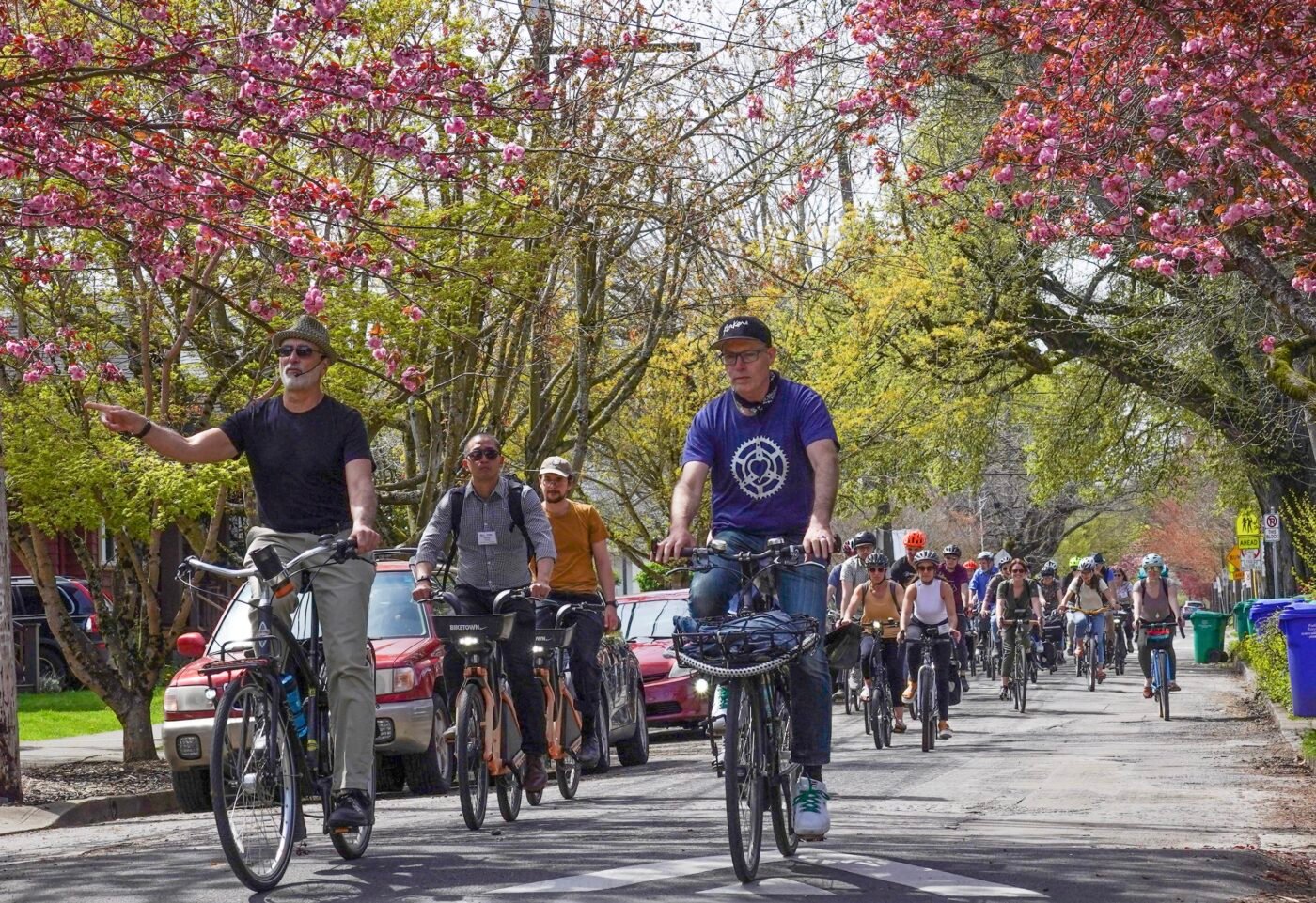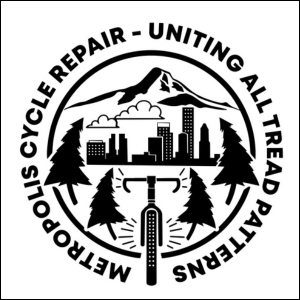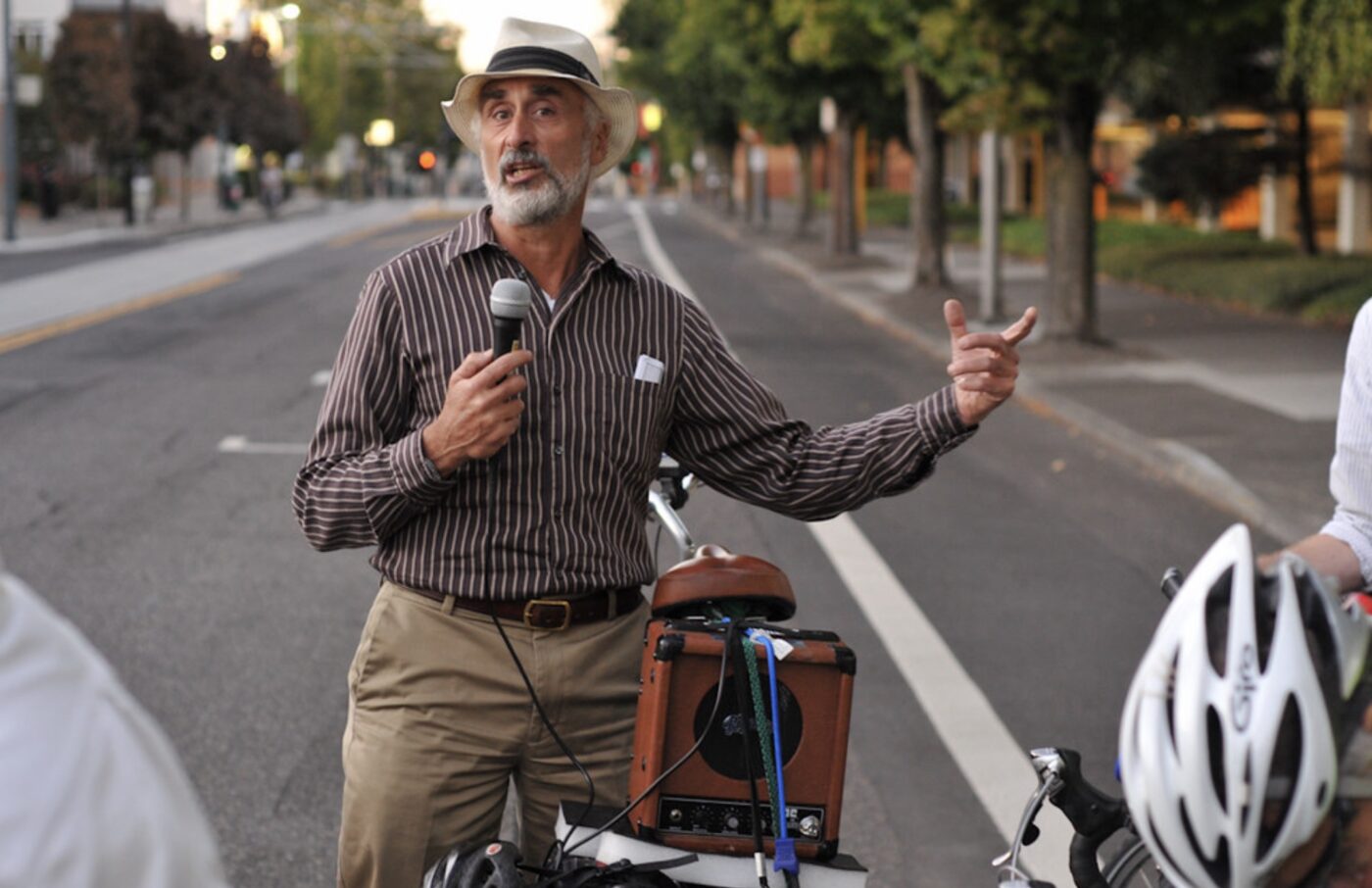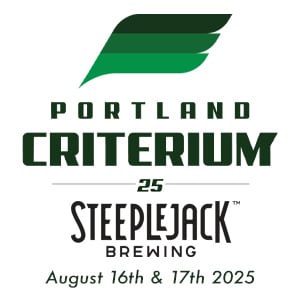Roger Geller has been the City of Portland’s bicycle coordinator for over 30 years. For most of that time he worked for a city that was a leader in his field. That’s not the case anymore and Geller has a plan to put Portland back on top.
In 1997, early in Geller’s career, Portland was the first American city to add color (blue) to bike lanes. 11 years later Portland was still an innovator, becoming the first US city to install bike boxes in 2008. Then we layered something even greater on top of infrastructure accolades: the best bike culture in the world.
Between 2007 and 2014 Portland was one of the greatest cycling cities in the world. What we lacked in ridership and bikeway infrastructure compared to great northern European capitols, we made up for with a cultural milieu so steeped in cycling it was the envy of Dutch planners and its tendrils reached anyone who spent time here. Industry, events, political support, economic development, advocacy groups, racing, media — the influence of biking was everywhere!
As head bike planner for the the Portland Bureau of Transportation, Geller was a key architect of that golden age. So when things started to cool off in 2014 or so (following a few years of shaky politics for cycling), Geller felt the shift. In a new white paper released this week, Geller wrote, “Portland’s bicycling strategy has not been producing desired outcomes since 2016,” — a notable acknowledgement from the city staffer largely responsible for that strategy.
“I think it’s really important for the city to demonstrate its commitment to bicycling by taking potentially disruptive actions.”
After a decade or so of stagnation and decline, there are signs of life for cycling in Portland. And Geller thinks the time is right for a local cycling renaissance.
At the Tuesday night meeting of the city’s Bicycle Advisory Committee (Geller has been PBOT staff liaison to that committee to for at least 20 years) Geller unveiled a 14-page plan he calls, “a comprehensive program to immediately focus on increasing ridership.”
After painting a picture of cycling’s political heyday for a new crop of BAC members, Geller said, “And here we are today. And I can’t remember the last time I heard any elected official say something positive about bicycling. It’s kind of dropped off the map.”
To get it back on the map, Geller wants to act fast — maybe even circumvent the city’s typical approach of incremental, politically-safe progress. Geller’s thesis is that how we get around is simply a rational choice people make. And right now, more people choose to drive than to bike.
“So how do we get people to choose to ride a bicycle rather than to drive a car? I think that is our challenge,” Geller said.
A typical response to this is to build more and better bike infrastructure. At a rally outside City Hall in 2010, before Portland City Council voted to adopt the Bike Plan for 2030, advocates held signs that said, “Built It!” as in, “built it and they will come.” Even today the “paint is not protection” mantra remains strong.
“You can’t watch anything on TV during the football season without seeing five Bud Light ads over the course of an hour right? That’s the level of campaigning that I want to do for biking. That’s what I think we need.”
Geller acknowledges that great cycling facilities matter, but those can take years to design and install. “We don’t have time to wait to build protected bike lanes on every roadway where we want them,” he said. Instead, Geller wants to go big on marketing, lean on existing advocates and early adopters, make bold yet inexpensive capital investments, and organize mass bike rides that will convince people to hop on a saddle.
Here’s an excerpt from the plan’s introduction:
Portland has strong policies and plans to reduce motor vehicle miles traveled. But, unless there is a dramatic shift in local politics and culture, Portland will be unable to rely on similarly strong driving reduction incentives to encourage increased bicycling. Portland will instead need to rely on persuasive tools to re-elevate the possibility of bicycling, on providing compelling reasons to do so and creating opportunities for a new generation of Portlanders to discover the joys and benefits of biking in the city.
Portland needs to re-awaken an awareness of bicycling and its many benefits. A reinvigoration of bicycle culture will create forums through which bicycling can re-enter Portlanders’ collective consciousness as a desired transportation choice. Through multiple polls and surveys, we have clear indication that Portlanders are interested in such a choice8 . Here is where we need to summon faith in our product (bicycling and what it creates) and our policies that elevate it as a tool toward achieving our desired outcomes.
Geller knows talk of marketing and communications will rub some infrastructure-first folks the wrong way. But in his calculation, Portland’s problem isn’t a lack of good bike infrastructure. Our problem is that not enough people are using it.
“This might be a controversial statement,” he said at the BAC meeting Tuesday night. “But I think there’s really not much we could do more immediately that would create safer conditions for biking than just getting more people out biking.”

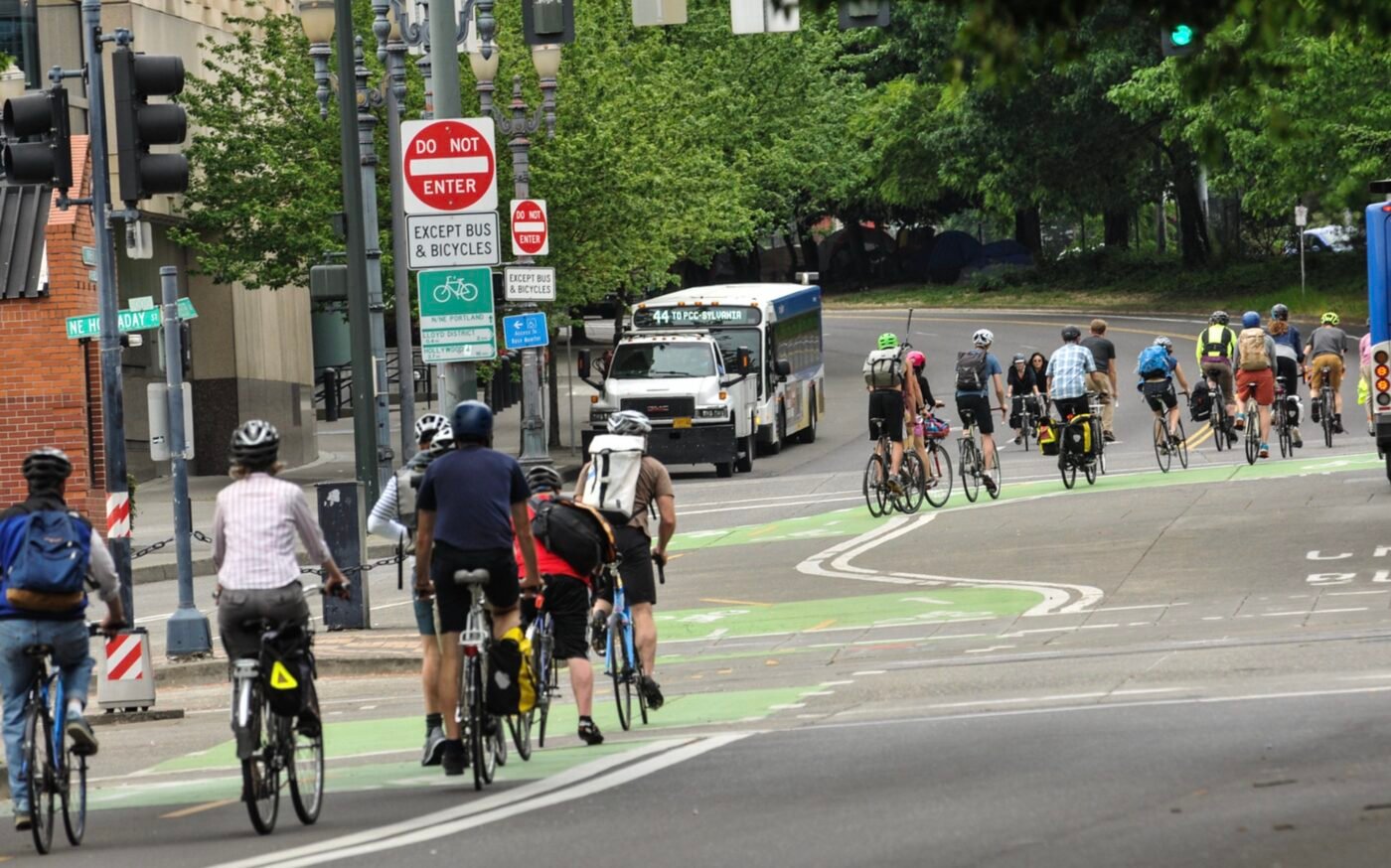
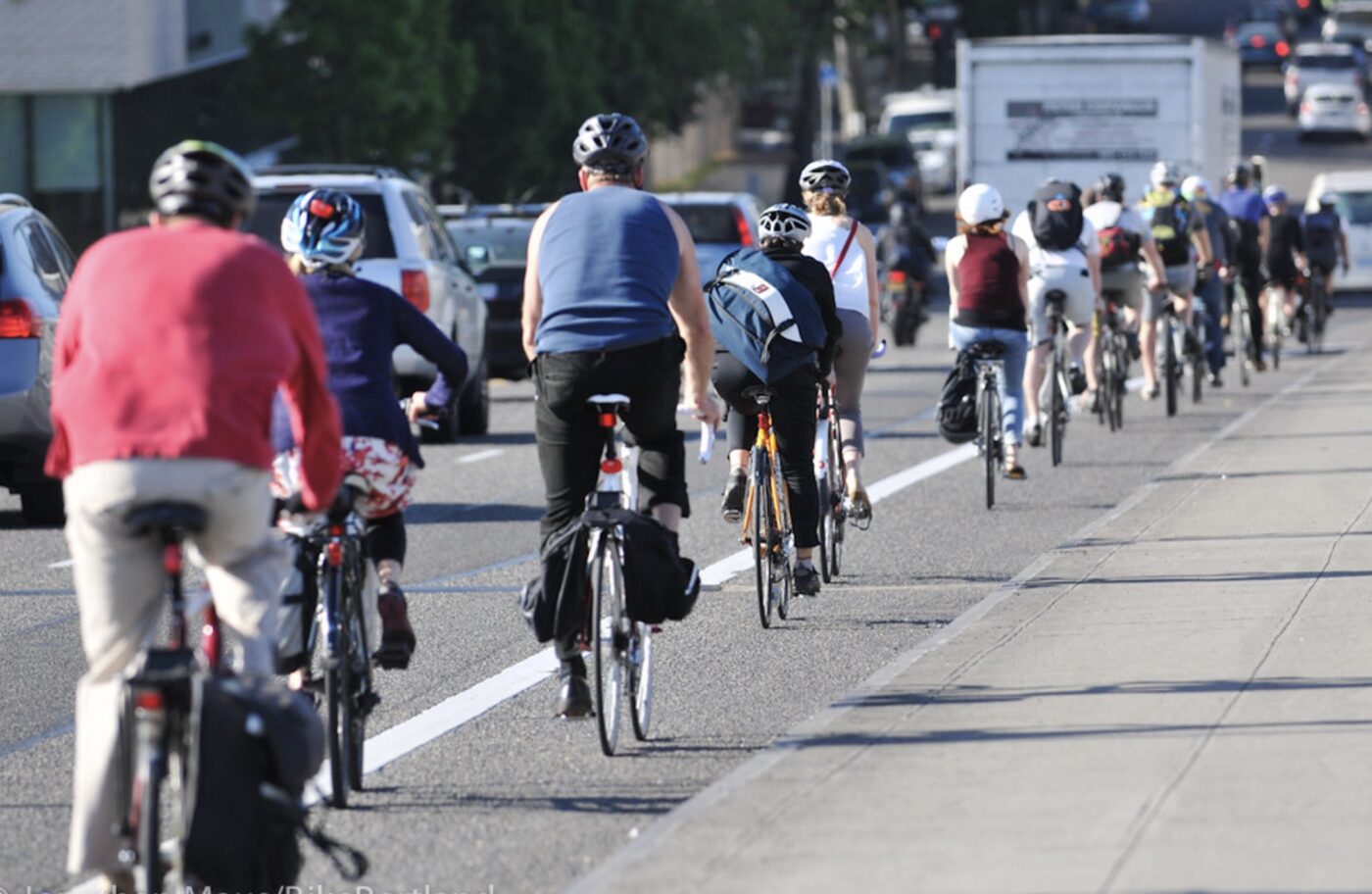
That’s the “safety in numbers” philosophy. And it works in practice. I’ve experienced it in places like Amsterdam where there’s no bike-specific facility to ride on, but it feels safe because there are people on bikes all around me. It’s also why so many people love Sunday Parkways or mass group rides during Bike Summer. And Portland has already tasted this phenomenon when bike traffic would spike during peak hours on streets like N Williams and NW Lovejoy back before The Decline.
How does Geller think we can get a massive number of Portlanders on bikes as “quickly as possible” (his words)?
His plan outlines six categories of action:
- All actions are to be considered in the context of how they can contribute to messaging about bicycling and the city’s intent.
- Capital and programmatic elements to display bold steps to both demonstrate institutional / leadership commitment and to get people to pay attention.
- Undertake actions that will inspire and activate advocates for bicycling, including opportunities for volunteering, proposed capital improvements and campaigns.
- Create an organized framework of rides to provide easy access to multiple ride opportunities.
- Initiate and execute a professional marketing campaign to promote bicycling.
- Start immediately with inexpensive efforts that feature rides, home-grown messaging campaigns and capital improvements.
He wants to hire a professional firm to poll Portlanders and figure out effective messages — then put them on billboards, run ads on social media, infiltrate all City of Portland communications with pro-bike messaging, and so on. And he wants the city to stop dithering and start doing. While large-scale capital projects with lots of curb work and concrete aren’t part of this plan, Geller thinks striping bike lanes in certain places and re-allocating lane space away from parked cars could be done quickly with great effect.
“I think it’s really important for the city to demonstrate its commitment to bicycling by taking potentially disruptive actions,” Geller said, in response to a question from a member of the public about PBOT’s reluctance to make driving less convenient (something that’s politically difficult, but imperative to influence choices).
Stop and note: This is a city employee saying he feels it’s time for his own agency to take “potentially disruptive actions.”
What does he mean by that? Geller, like many of us, is tired of PBOT plans gathering dust on a shelf. He used the example of Central City in Motion — a plan now 11 years old that still hasn’t reached its promise.
“Central City in Motion for example,” Geller said on Tuesday, “calls for bike lanes on 11th and 12th through southeast and northeast Portland. If we striped those bike lanes, eliminated a travel lane, or eliminated on street parking — whatever we choose to do — that would gain people’s attention and demonstrate a commitment on the part of the city to follow its policies and achieve its goals.”
Read that again. This is a leader who works in the same agency that removed a newly-installed bike lane because a few neighbors said it was a hardship they weren’t given proper notice about (by the way, it’s been almost a year since they were removed and PBOT has made no announcement about putting them back).
Once a project is in the news and people are paying attention, Geller says that’s the moment to deliver the message. For Geller, the message (which would have been professionally crafted beforehand and city staff would have been trained to deliver with confidence) should be something like: “‘Yes, it is important to us to limit driving for these reasons, or to encourage bicycling for these reasons.'”
Before your cast stones at Geller’s plan because it relies mostly on words and intentions, keep in mind he’s operating from the very reasonable assumption that the power of marketing and trends is the best option at our immediate disposal. It’s a pragmatism forged from three decades working in government under a dysfunctional political system (that is thankfully gone in six weeks).
“We don’t have the tools Copenhagen has. We can’t make gas $8 a gallon. We’re reluctant to make parking very expensive. We can’t have the registration cost of a car be 100% the cost of the car,” Geller lamented at the meeting. “So we don’t really have those strong financial tools that help with the decision making in those other places. So we have to find something else that resonates with people and encourages them to choose [bicycling].”
If Geller had it his way, he’d fund this plan with a $40 million budget over a few years. That kind of money, he said half-jokingly, would allow him to “run the Bud Light campaign for biking.”
“You can’t watch anything on TV during the football season without seeing five Bud Light ads over the course of an hour right? That’s the level of campaigning that I want to do for biking — both at the grassroots and a high-end, professional level. That’s what I think we need.”
— Read Geller’s plan – Bicycle Transportation Strategic Implementation Plan: Creating a comprehensive program to immediately focus on increasing ridership

